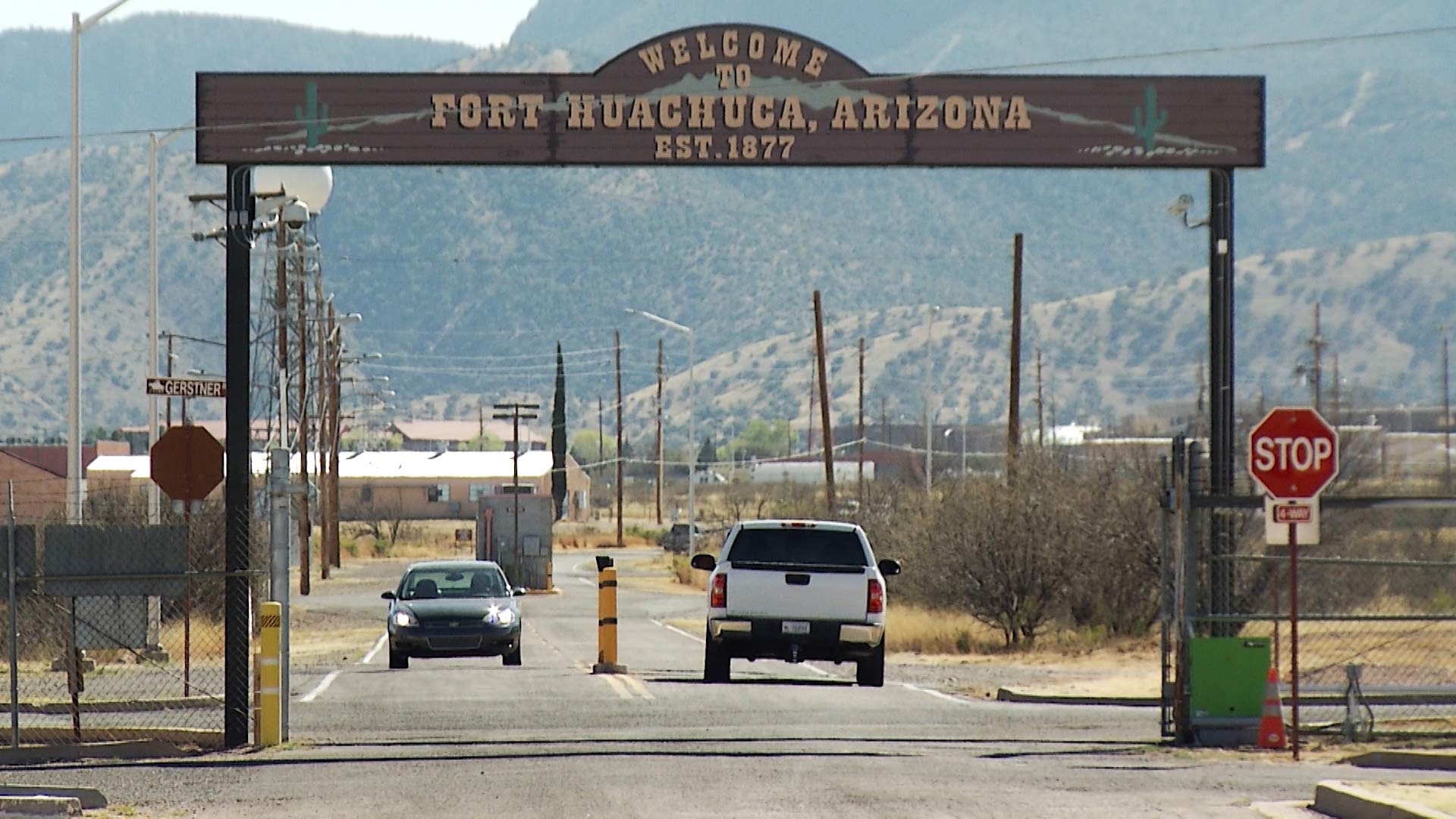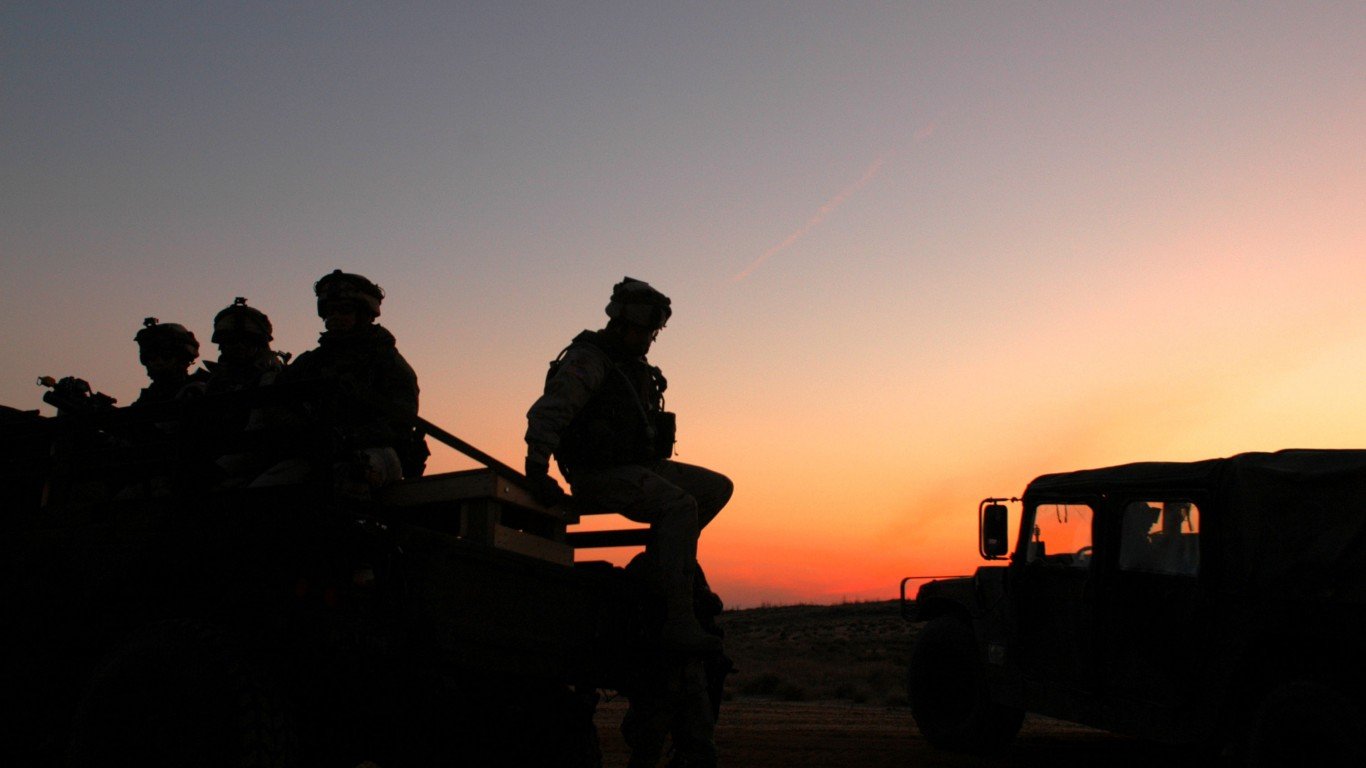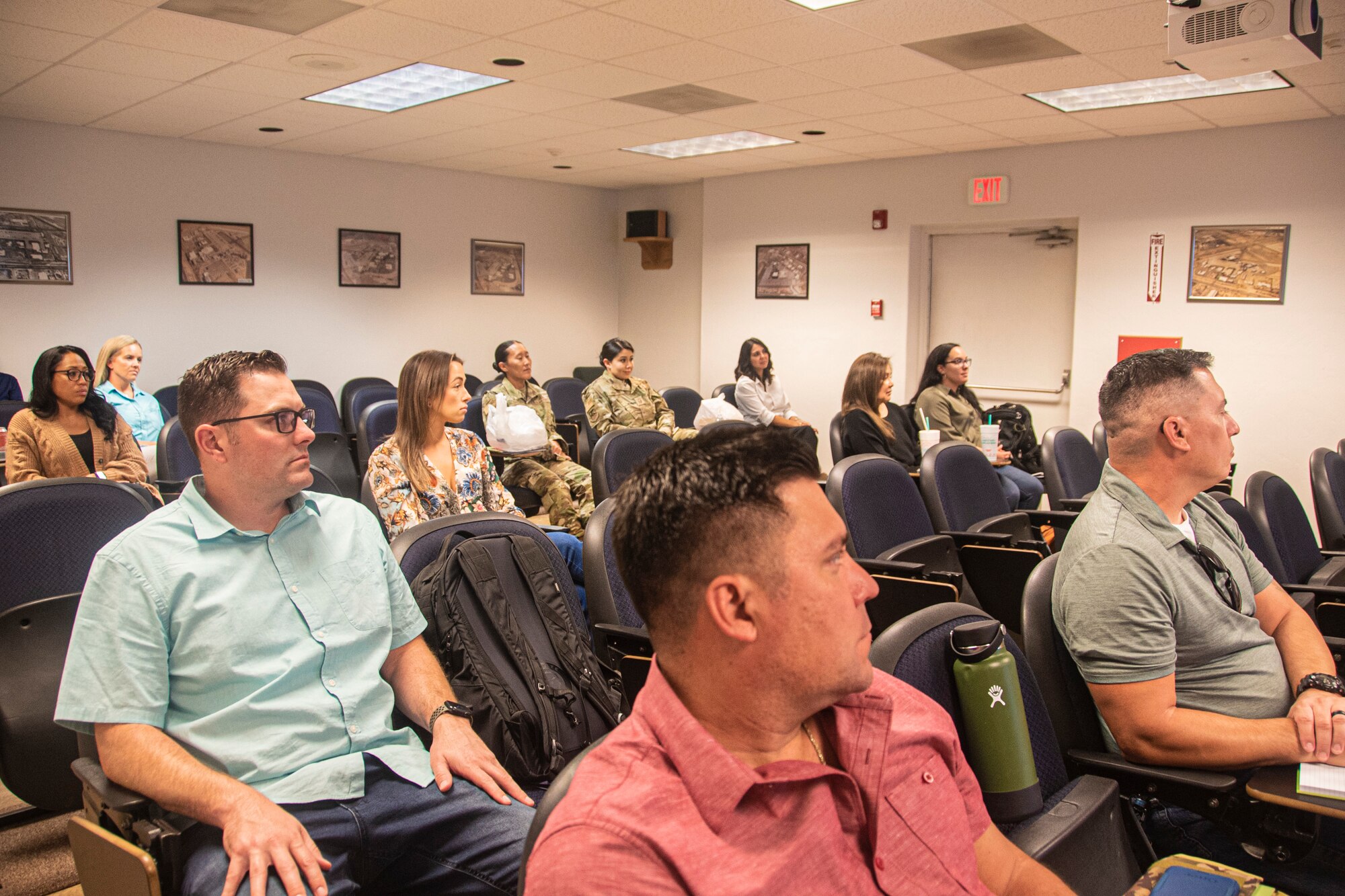Arizona Military Base - This article needs additional references for validation. Please help improve this article by adding links to trusted sources. Unsourced material may be objected to and removed. Find sources: "Davis–Monthan Air Force Base" - News · Newspapers · Books · Scholar · JSTOR (May 2013) (Learn and how to remove this template message)
32°09′49″N 110°50′58″W / 32.16361°N 110.84944°W / 32.16361; -110.84944 Coordinates: 32°09′49″N 110°50′58″W / 32.16361°N 110.84944°W / 32.16361; -110.84944
Arizona Military Base

Davis–Monthan Air Force Base (DM AFB) (IATA: DMA, ICAO: KDMA, FAA LID: DMA) is a United States Air Force base located 5 miles (4 nmi; 8 km) southeast of downtown Tucson, Arizona. Established in 1925 as Davis–Monthan Landing Field. The host unit at Davis-Monthan AFB is the 355th Wing (355 WG), assigned to the Twelfth Air Force (12AF), part of Air Force Command (ACC). The base is best known as the location of the Air Force Materiel Command's 309th Aerospace Maintenance and Regeneration Group (309 AMARG). The aircraft factory manufactures all surplus military and space aircraft for the military and the US government.
Two Hh 60 Pave Hawks Refuel Over The Desert Surrounding Davis Monthan Air Force Base, Arizona Poster Print By Stocktrek Images
Davis–Monthan Air Force Base is a key ACC facility. The 355th Wing (355 WG) provides A-10 Thunderbolt II close air support and OA-10 forward air controls to ground forces worldwide. The 355th FW is a receiving unit that provides medical, logistical, mission, and operational support to assigned units. The 355 FW is the only official training unit for the A-10 aircraft, providing basic and recurrent training to US Air Force A-10 and OA-10 pilots, including Air Force Reserve Command (AFRC) and also Air Force members. Air Force Reserve Command (AFRC). National Guard (ANG). The 355th is the enforcement authority for the ACC's INF and START treaties. In October 2018, the 563rd Rescue Group, formerly a geographically separated unit of the 23rd Wing at Moody AFB, Georgia, was transferred to the 355th Wing along with its HC-130J COMBAT KING II and HH-60G Pave Hawk aircraft.
One of the wing's combat units, the 55th Electronic Combat Group (55 ECG) is a geographically separated unit (GSU) of the 55th Wing (55 WG) at Offutt AFB, Nebraska. Counterintelligence and electronic attack capabilities support US and coalition combat air, surface, and special forces. The 55th ECG operates Lockheed EC-130H Compass Call aircraft worldwide in wartime combat operations and other situations. . It provides both basic and recurrent training for all EC-130H Compass Call pilots, navigators, electronic warfare officers and aircrew.
Another important unit is the Air Force Reserve Command's (AFRC) 943rd Rescue Squadron (as a GSU under the AFRC's 920th Rescue Wing at Patrick Air Force Base, Florida). Equipped with HH-60G Pave Hawk helicopters and Guardian Angel crews, the 943 RQG is responsible for combat search and rescue (CSAR) and personnel recovery (PR) worldwide.
Perhaps the most visible is the Air Force Materiel Command's (AFMC) 309th Aerospace Maintenance and Regeneration Group (309 AMARG). As the headquarters of the 309th AMARG, Davis–Monthan AFB is the only airframe site that hosts a number of military and US government aircraft and other aircraft such as ballistic missiles. Tucson's dry climate and alkaline soil make it an ideal location for aircraft storage and preservation; more than 4,000 military aircraft are parked at the base.
What Are The Military Bases In Arizona?
The base was named for World War I pilots Lt. Samuel H. Davis (1896–1921) and Lt. Oscar Monthan (1885–1924), both natives of Tucson. Monthan served as a private in the army in 1917, was commissioned as a ground officer in 1918, and then became a pilot; He died in a Martin B2 bomber accident in Hawaii in 1924.
First Lieutenant Samuel Howard Davis (November 20, 1896 – December 28, 1921) was an aviator and officer in the United States Army Air Service. Born to Sam and Effie Davis
After being drafted in 1917, he was briefly assigned to Fort Hauchuca, Arizona, then transferred to College Station, Texas to complete his academic studies. After graduating in 1918, he returned to the Army and assembled airplanes at Kelly Field in San Antonio, Texas.
Davis was honorably discharged from the Army in about 1919 with the rank of First Lieutenant in the Reserve Corps. He was involved in commercial aviation for a time as president of the Arizona Aviation Company, where he managed the Orioles and standard production aircraft.
This Aerial Photograph Shows Some Of The More Than 4,400 U.s. Military Planes Mothballed In Tucson, Arizona, At The Davis Monthan Air Force Base, Home To The Largest Aircraft Storage And Preservation Facility
He was killed in a military plane crash on December 28, 1921, while flying a Curtiss JN-6 HG at Carlstrom Field near Arcadia, Florida.
Davis' father attended the dedication of the base in 1925, as did G.W.P. Governor. Hunt, who spoke at the handover.
In 1919, the Tucson Chamber of Commerce Aeronautics Committee established the nation's first municipal airport on the site of the present-day Tucson Rodeo Grounds. The rapid growth of aviation meant they moved to what is now Davis-Monthan Air Force Base in 1927. The City of Tucson purchased land southeast of the city for an airstrip and took ownership of the site in 1925.
Fresh from crossing the Atlantic Ocean, Charles Lindbergh flew the Spirit of St. Louis to Tucson in 1927 to dedicate Davis–Monthan Field.
Santego Military Base, Arizona
Military presence at the site began when Sergeant Simpson moved his fuel and supply operations to the site on October 6, 1927. He kept a journal of his field clients, including Lindbergh, Amelia Earhart, Benjamin Foulois, and Jimmy Doolittle. Doolittle, who received the Medal of Honor for his attack on Tokyo in 1942, was the first military customer on the ground on October 9, 1927. The combination of civilian and military operations worked well until the early 1940s, when military requirements required the transfer of civilians. aviation activities.
Davis-Monthan Airport became Tucson Army Air Field in 1940 as the United States prepared for World War II. The first assigned units of the United States Army Air Forces were the 1st Bomb Wing, 41st Bomb Group, and 31st Air Base Group, activated on 30 April 1941 by Lt. Col. Ames S. Albro, Sr.
In its military role, the base became known as Davis-Monthan Army Airfield on December 3, 1941. US military leaders used the airfield for heavy bomber operations, Douglas B-18 Bolo, Consolidated B-24 Liberator and Boeing operations. B-29 Superfortress bombers for training and surveillance missions.

Training at the airfield ended on August 14, 1945, when the Japanese surrendered. Davis-Monthan played a post-war role in housing German POWs from June 1945 to March 1946. It also served as a separation center, bringing the base population to 11,614 in September 1945.
Arizona Ranks High Among Best States For Military Retirees
With the end of the war, activities at the base practically stopped. That's when the base was chosen as a storage location for hundreds of decommissioned aircraft when the Army's 4105th Airborne Unit was activated. The 4105th oversaw the storage of surplus B-29 and C-47 "Gooney Birds". Tucson's low humidity and alkaline soil made it an ideal place to store and preserve aircraft awaiting cannibalization or potential reuse, something that continues to this day.
The Cold War era opened at Davis-Monthan on March 21, 1946, when the facility was placed under the direct control of the newly formed Strategic Air Command (SAC). SAC's presence at the base began with the 40th and 444th Bomb Groups, both equipped with B-29s. As part of postwar cuts, these groups were later inactivated, and personnel and equipment were combined with the 43d Bombardmt Group in October. On January 11, 1948, after the United States Air Force had been established as an independent entity four months earlier, the facility crashed into Davis–Monthan Air Force Base. On June 30, 1948, the Air Force activated the 43rd Air Refueling Squadron, whose KB-29Ms were equipped with aerial refueling equipment recently purchased from the British FRL company. The 43rd ARS, along with the 509th ARS at Walker AFB, New Mexico, was the first refueling unit in history.
On March 2, 1949, Lucky Lady II, a B-50A of the 43d Bombardmt Wing, completed the first nonstop round-the-world flight of 23,452 miles (37,742 km) in 94 hours and 1 minute (249.45 mph). Lucky Lady II was refueled four times in the air by KB-29 tankers of the 43d Air Refueling Squadron, which had made only one operational aerial refueling connection prior to the mission. For this outstanding flight, the crew of Lucky Lady II received the Mackay Trophy, awarded annually by the National Aeronautic Association for the outstanding flight of the year, and the Air Age Trophy, an Air Force Association award given annually in recognition of outstanding contributions. to the general understanding of aviation.
In 1953, the age of the jet reached the Davis–Monthan SAC units, which were converted to the new Boeing B-47 Stratojet. The 303d Bombardmt Wing, Medium, was originally established on 27 August 1951 and activated on 4 September 1951 at Davis-Monthan Air Force Base. The wing operated with B-29s until January 1952, when they were equipped with KB-29s. On 20 January 1953, the 303d was transferred to the Boeing B-47 Stratojet for three bomber squadrons, while one
Capabilities Demonstration At Adazi Military Base In Latvi…
Military base in arizona, arizona secret military base, fort huachuca military base in arizona, military base in phoenix arizona, military base in arizona usa, yuma arizona military base, tucson arizona military base, arizona military, arizona base, military base in tucson arizona, military base arizona, military base


0 Comments